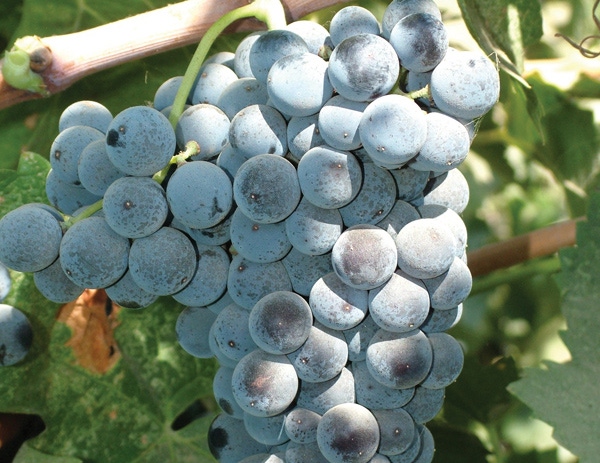
Two months after starting to pick his 2015 wine grape crop on Aug. 10, Madera County grower Carson Smith, was expecting to complete harvesting his remaining French Colombard by the last week of October.
Carson Smith Farming Co., Inc., co-owns and manages 800 acres of wine grapes in the southwestern part of the county along the San Joaquin River. Production also includes Chardonnay, Muscat Alexandria, Pinot Grigio and Ruby Cabernet.
The timing of Smith’s harvest was in line with last year’s unusually early schedule. This year, he finished picking Cabernet Sauvignon on Oct. 1 – two days earlier than in 2014.
“Although a number of growers in this area had finished by early October, just about everyone else should have their harvest wrapped up by the end of the month,” says Smith, who serves on the board of directors of the San Joaquin Valley Winegrowers Association. “Yields from our own vineyards and some custom harvesting have been average to about 20 percent less than average. That’s generally the trend I’m hearing from other growers around here, too.”
The decline in production as the vines recoup from the larger-than-usual crops of the last two or three seasons isn’t a surprise to him and other area growers, Smith notes. He suspects drought also played a role in limiting yields.
“Some growers simply may have lacked water to irrigate their vineyards last winter,” he says. “Others, with little dry winter irrigation experience, may not have applied as much water as needed.”
The grape crop in his area escaped any spring weather threats in the form of frost or adverse conditions during bloom. Also, growers, generally, were able to control diseases, such as bunch rot and powdery mildew, without difficulty.
“Overall, grape quality seems to be very good,” he says. “Sometimes, getting sugar to desired levels can be a struggle with an average size crop. But, this year, maturity was easy to come by. The crop got off to an early start and stayed ahead from bud break to harvest and that usually makes it easier to get the sugar.”
However, getting enough labor to harvest the grapes when needed proved otherwise.
“It was a challenge for quite a few of us,” Smith says. “Like other growers, we raised wages this season. But we couldn’t always get the four to five workers we needed per harvester to run all the machines when we wanted to. The situation wasn’t critical. But we haven’t had this problem in the past few years.”
For some potential grape workers, the tomato harvest apparently proved more attractive. The piece rate paid for harvesting that crop allowed workers to earn as much working from daylight to noon in the tomato fields as they could working longer hours at night in the vineyards, he said.
Meanwhile, the potential to make more money continues to prompt some growers in the region to replace their grape vines with almond and pistachio trees. The low spot-market price for San Joaquin Valley wine grapes this year and dim prospects for any improvement in the next several years is also spurring grape growers to seek more profitable alternatives.
Growers who decided to convert their vineyards to tree nut orchards this year have been quick to act, Smith notes. “This year, I’ve seen more raisin and wine grape vineyards dug up by Oct. 1 than ever,” he says. “Those growers are in a hurry to get it done.”
As Smith points out, imported bulk wines play a big part in the price of southern San Joaquin Valley grapes. To the extent that any reduction in the tonnage of grapes produced here helps reduce total supply, these vineyard removals should add some support to prices in the short term, he says.
But increased imports aren’t the only challenge facing San Joaquin Valley’s grape growers. The varieties grown here are used primarily to produce wines selling for less than about $10 a bottle. While the market for these lower-priced wines represents a sizeable volume of San Joaquin Valley grapes, consumption remains flat. That’s occurring even as more and more consumers are choosing higher-priced wines.
“A lot of growers here want to maintain their vineyards as part of a diversified portfolio to hedge against price risks of other crops.” Smith says. “But to make money doing that they may have to replace varieties that have fallen out of favor with those that consumers want now.”
Maintaining a viable market for their grapes, may also require San Joaquin Valley growers to adopt various production practices that can improve the quality of their product, Smith notes. And that raises a major concern among growers.
“Improving grape quality adds to production costs,” he says. “In the past, growers here who were able to increase grape quality ended up receiving the same price as growers with lower quality grapes. The challenge will be for growers to realize an economic advantage for producing a higher quality grape.”
About the Author(s)
You May Also Like




